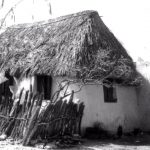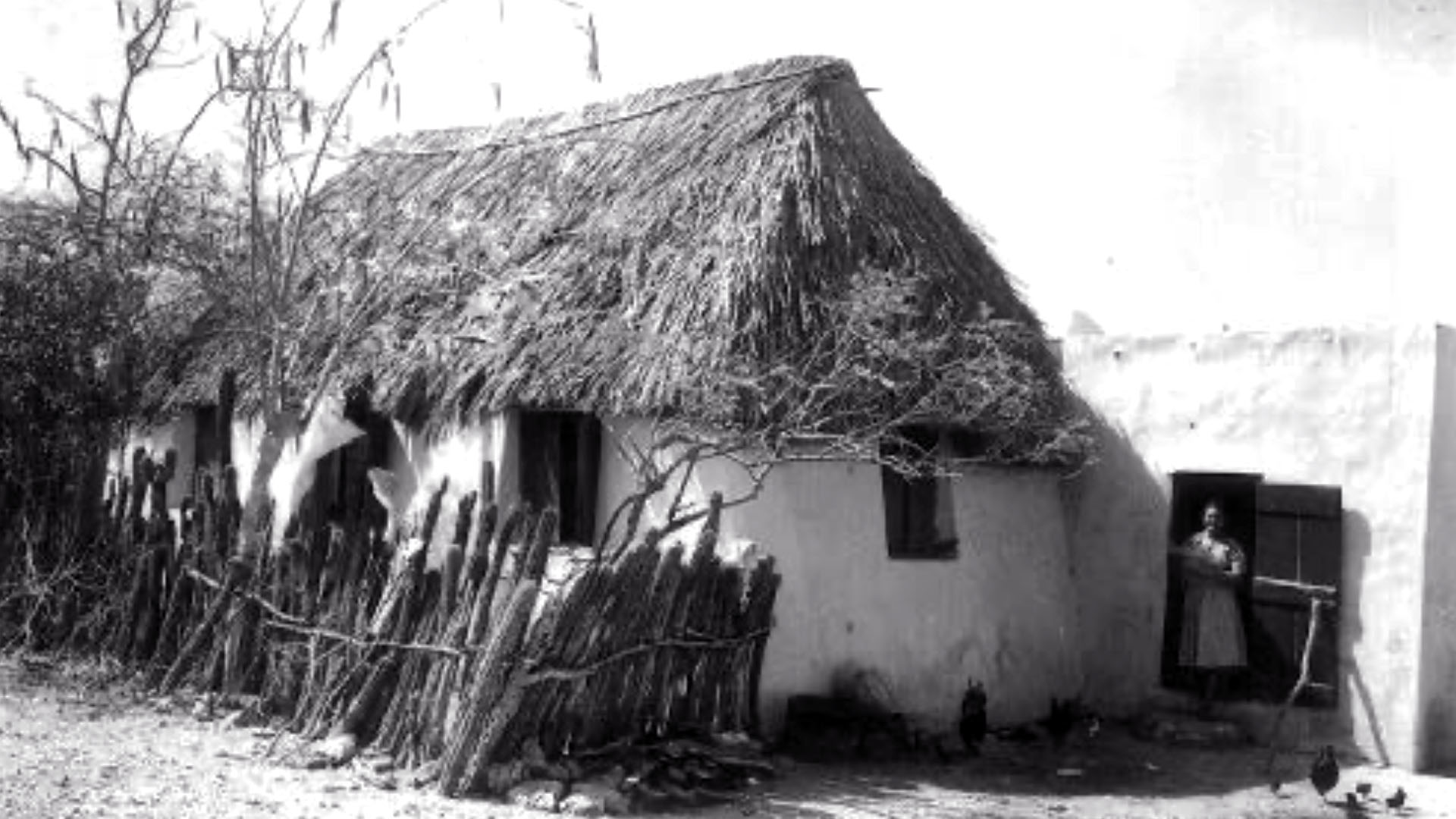Roofing with sorghum stalks
Bonaireans originally lived in a ‘kas di bara’, also known as a house with a roof of the maize plant or house of maize plant. ‘Kas di bara’ refers to the fact that branches of the mangrove tree were mainly used to build walls. These branches were woven together around the stake that was set in the earth. Then some kind of clay was used, it was placed on the wooden frame. Grass was added to the clay so that it became a firmer mass. The walls of these houses were plastered by hand to make them smooth.
In all neighborhoods there were one or more pits from which the clay was obtained. The women carried the clay on their heads and took it to the houses under construction. To prevent the large cans in which kerosene and salad oil were imported from pressing on their heads, they tied a cloth on their heads. The name of this cloth was 'rudia’(knee). Carrying those tins of clay to the construction sites often happened in the evening, especially at full moon, while the women sang work songs
The work to make a roof for the house was very specialized. After the wooden frame for the roof was laid, it was covered with corn plant. The person who did this was a coverer, a ‘kubridó’ (coverer).
As part of the house, a shelter of flambeu (thin wood that remains after cacti has withered) was sometimes also made at the front as a kind of front room. And a smaller ‘kas di bara’ was sometimes also made in the yard. This was used as a storage place.
In these houses there were no toilets or bathrooms, they were outside in the yard.
Text Boneiru di Antaño II, p.25, B. Antoin

